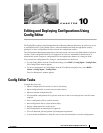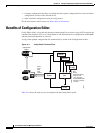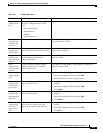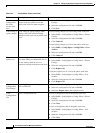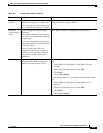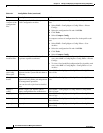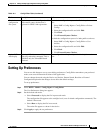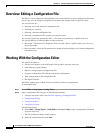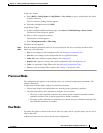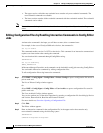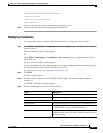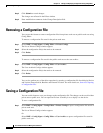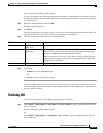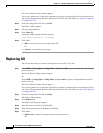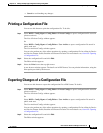
10-8
User Guide for Resource Manager Essentials 4.1
OL-11714-01
Chapter 10 Editing and Deploying Configurations Using Config Editor
Overview: Editing a Configuration File
Overview: Editing a Configuration File
The Editor is a core component in Config Editor. It acts as the interface to open a configuration file, make
a local copy, save the changed configuration and commit the changes back to original location.
You can edit a file by:
• Selecting device and version of configuration file
• Searching for a pattern
• Selecting a baseline configuration file
• Selecting a configuration file stored in an external location
You can edit a previously opened file, that is, a file from your private area or public work area.
You can edit the files in either the Raw or Processed mode.
• Raw mode—The entire file is displayed. After you open a file in a specific mode, you can view it
only in that mode.
• Processed mode—Only the file commands are displayed at the configlet (set of related configuration
commands) level.
Working With the Configuration Editor
You can use the editor to:
• Edit and save changes to the configuration file in public or private work area.
• Undo editing or typing changes
• Replace a string in opened configuration files
• Compare configuration files with the same device configuration
• View changes made in the configuration file
• Run Syntax Checker
The Editor window opens in Raw or Processed mode, based on your preferences.
To launch the Editor:
Step 1 Select RME > Config Mgmt > Config Editor.
Step 2 Open a configuration file using any of the following methods:
• Using the selection criteria. See Overview: Opening a Configuration File
• Using Private Configs
• Using User Archive
• Using Device Center
Using Private Configs
a. Select RME > Config Mgmt > Config Editor > Private Configs to open a configuration file stored
in private work area.
The List of Private Configs window appears.
b. Select the configuration and click Edit.




